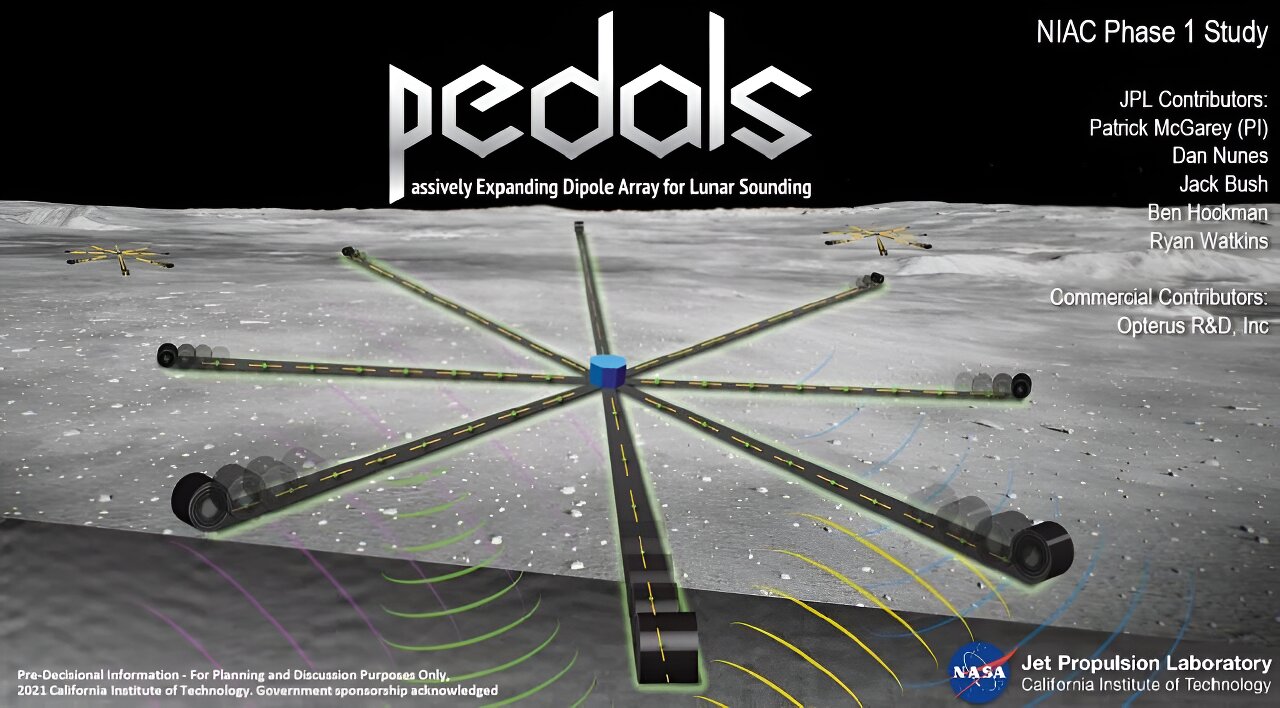Exploring the mysteries hidden beneath the lunar surface is crucial for future space exploration. While some missions have already mapped parts of the moon’s sub-surface, there is still much to discover deep within, such as vast lava caverns and potentially valuable water or mineral deposits.
But now, a groundbreaking technology funded by NASA’s Institute for Advanced Concepts (NIAC) could change everything. Developed by a team at the Jet Propulsion Laboratory (JPL), the Passively Expanding Dipole Array for Lunar Sounding (PEDALS) offers a solution to the age-old problem of exploring the moon’s interior.
PEDALS utilizes a self-deploying technique to position a large-scale antenna on the lunar surface. Once deployed, it can collect data on the sub-surface down to a few kilometers, providing the deepest insights we have ever obtained.
Previously, the deepest data was collected by the Lunar Radar Sounder on the SELENE orbiter, but it lacked the high-resolution images necessary for a comprehensive understanding. PEDALS aims to overcome this limitation and unlock a wealth of information about the moon’s structure.
The JPL team behind PEDALS has identified five scientific objectives that can be achieved with this technology, including mapping volcanic interfaces in 3D and studying rock density in specific areas.
So how does PEDALS plan to achieve these objectives? The system will land on the moon using an airbag, a tried-and-true method. Once on the surface, it will deploy a coilable boom, a concept that NASA has been researching for years. The size of the boom will depend on factors such as the volume of the landing airbag and the surface area the antenna needs to cover.
After deployment, PEDALS will collect data using its antenna. The exact design of the antenna is still being studied, with two potential configurations being considered: a loop antenna or a coupled dipole. Further research is needed to determine which option is more suitable for lunar exploration.
One challenge is finding the right location to deploy PEDALS. The moon’s surface is uneven, with large boulders scattered randomly. The JPL report suggests calculating the size of these rocks (estimated maximum diameter of 50 cm) and determining the necessary space for the antenna to operate freely. Autonomous rovers could potentially assist in clearing the path, but for now, the project’s progress depends on whether PEDALS receives a Phase II grant.
Despite the uncertainties, the prospect of deploying a large-scale antenna to the lunar surface is an exciting one. Someday, we may finally uncover the secrets hidden beneath the moon’s enigmatic exterior.








